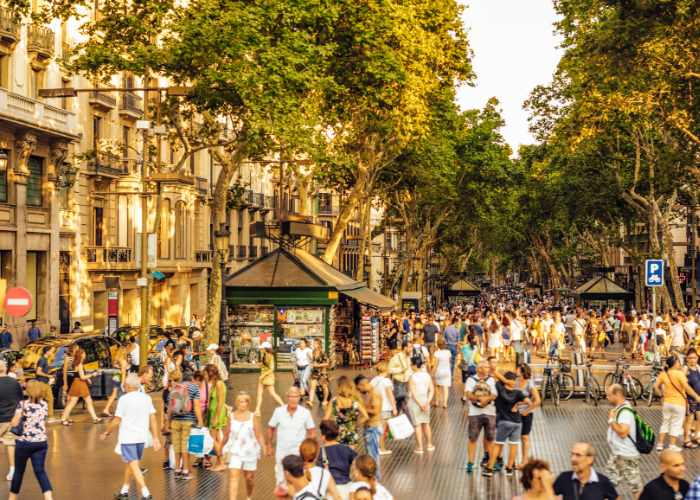It is an afternoon in August, just before five o’clock, and a human statue, shrouded in gold, displays the most peaceful, tranquil image on the famed Rambla. Just as it was before the fateful August 17, 2017.
The terrible attack, five years ago on Wednesday, seems far away and forgotten. At around 4.50pm local time, a white van knocked over pedestrians on La Rambla in Barcelona. The van zigzagged from Plaça de Catalunya for about 530 metres across the pedestrian area of La Rambla. It was the deadliest attack in Spain since the Madrid attacks of 11 March 2004 .
Today, La Rambla shows hardly any traces of the carnage that left 16 dead, dozens wounded and countless passers-by in shock. Many shops have a new face, or have their shutters closed displaying worn-out posters looking for tenants. The pandemic has left its mark here too. They are not comparable, far from it, but we have experienced two tragedies in the last five years,’ says an employee of the local lottery office, remembering the Covid pandemic and the damage it caused to commercial life, much worse for her than the terrorist massacre. She has worked there for fifteen years: ‘I have seen La Rambla change, adapt to what happened. But now it seems like nothing happened’.
Unnoticed memento
On the other hand, few symbols recall the attack on 17 August 2017, also known as 17-A. Years ago, the city council placed a discreet memorial, with the express intention of not provoking reactions and changing La Rambla. Most tourists do not notice the sober and discreet plaque with an inscription – ‘May peace cover you, O city of peace’- in several languages.
Few make the connection between the area and 17-A. Of the thousands of tourists who pass through daily, few stop for a guided tour. Moreover, Miró’s mural, the Liceu, and La Boqueria market attract more attention and raise more questions than the attacks.
Music and wreath laying during the homage ceremony
On Wednesday, Barcelona will soberly commemorate the attack of five years ago and pay tribute to the victims. Victims, family members and high-ranking government representatives will take part in the event. The event will be presented by the writer Fàtima Saheb and will be graced by a youth symphony orchestra playing two pieces of music. The tribute will end with a minute’s silence and a wreath-laying ceremony, while the traditional Catalan song Cant dels Ocells will be performed live.
Bollards and policemen
In addition, the residents are still waiting for the long-awaited renovation of the road, a historical demand dating back more than ten years. The work, for which the municipality gave approval in May 2016, is expected to begin in September, but only on a small section. In total, the work will take at least seven years. Far too long for one of the most visited streets, the image of Barcelona and the connecting point between the sea and the city, which is crucial for the next America’s Cup, says the association Amics de la Rambla.
Apart from the invisible memorial, bollards shielding pedestrian crossings and preventing a vehicle from slipping through and repeating a massive hit-and-run are the only major change after 17-A. Whether that is sufficient, residents and business owners doubt.
And while the tourists enjoy the summer and the sun again, a meat seller in the Boqueria says in a crackling voice: ‘Do you really think La Rambla has been restored? No, it is not the same and it will never be the same’.


